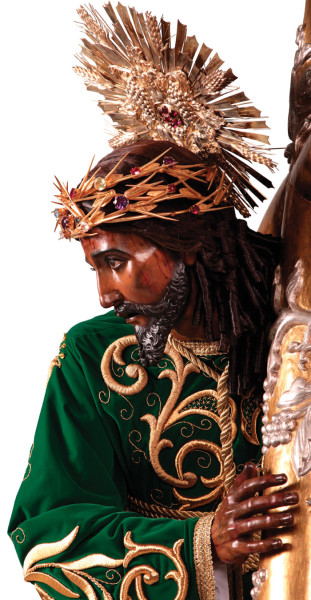Spanish American Sculpture in Guatemala
The Council of Trent (1545-1563), held by the Catholic Church in Italy, proclaimed that architecture, painting and sculpture had a role as media for propaganda, and any works depicting Christ’s suffering and explicit agony were desirable and proper. This was transmitted in the Guatemalan sculptures made in the sculpture workshops of Antigua (then Santiago de Guatemala). The most famous sculptors are Quirio de Cataño, Mateo de Zúñiga and Alonso de Paz. Differences in Guatemalan sculpture include particular tenderness and melancholy in the facial expressions. The amount of detail in the creases in the robes and longer proportions is notable. All of the sculptures are made out of cedar (termites don’t eat cedar) and have appliques with paint and then varnish. We have some of the most expressive sculptures!
This contributes to the emotion felt by the faithful as many of the figures are processed around Antigua. Processional figures like the Buried Christ (Señor Sepultado) are in the processions during Holy Week and for anniversaries—such as the one from 4-9 p.m. on November 2 from Escuela de Cristo commemorating the 64th anniversary of the Holy Vigil and Procession honoring the dead.
I thought that almost all of the religious art was found in the large number of churches in the city. We know that all of the art in colonial times was religious except for a few family portraits. Malgouyres pointed out that all wealthy families had large collections of religious art, sometimes surpassing those from their nearby church. These works were taken to Guatemala City when the capital moved from Antigua after 1774. Today, one of the finest sculptures (Malgouyres gives this a “10”) is the San Miguel Archangel found at the Silver Museum at the Paseo de los Museos. The silverwork on the hands and expressive face are exceptional.
